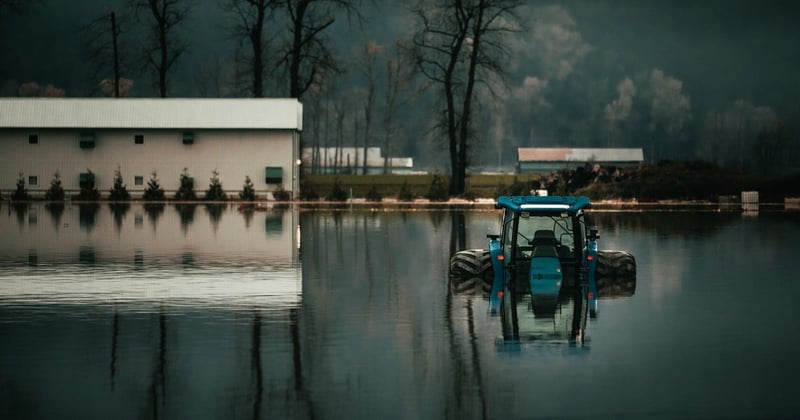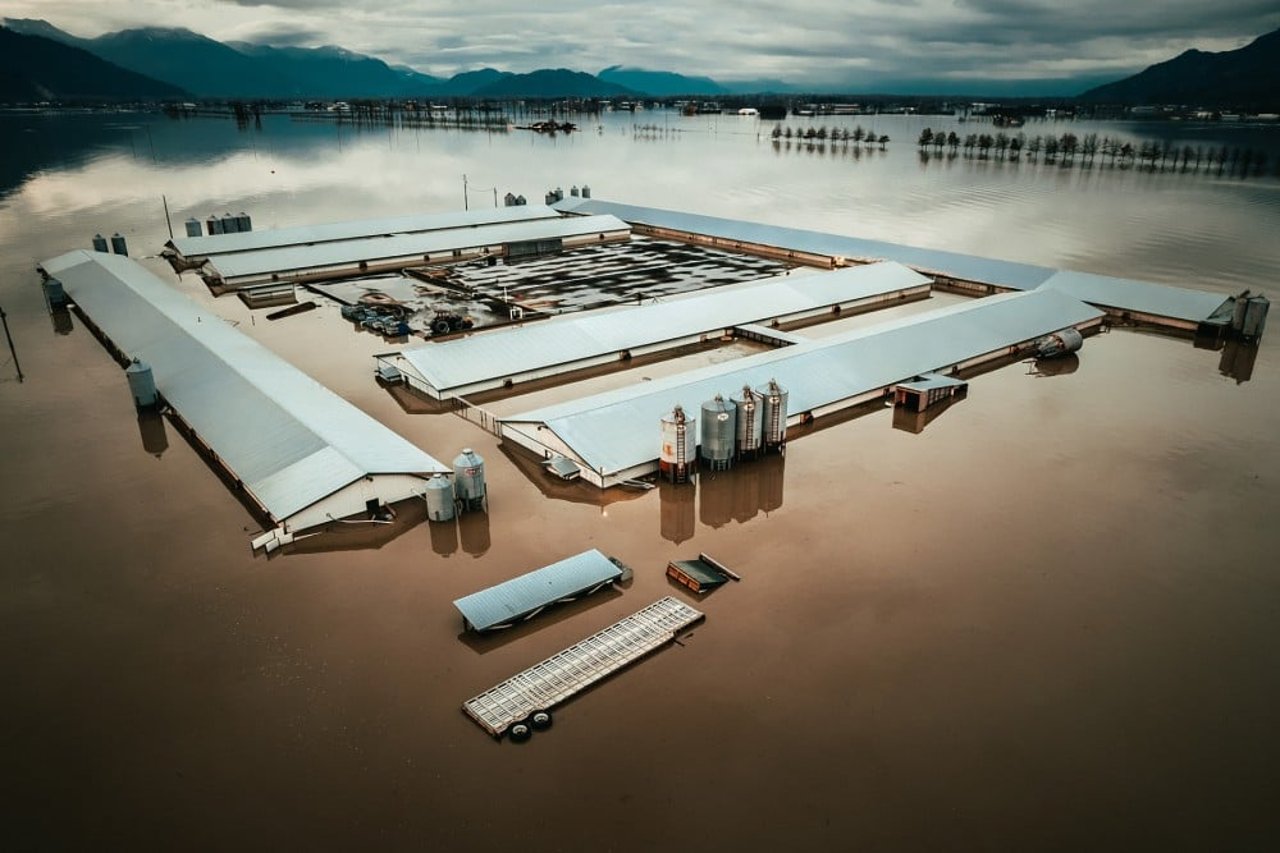
Understanding the 2021 Abbotsford floods
News
Exploring the causes of the largest agricultural disaster in British Columbia’s history and the urgency for animal welfare focused and climate-resilient farming practices.
On November 17th, the lower mainland of British Columbia was inundated with floodwaters and mudslides from an atmospheric flood resulting in the largest-ever agricultural disaster and animal welfare crisis in the province's history.
Together with Stephanie Eccles and Dr. Lisa Stoddard, World Animal Protection has produced a comprehensive report, “Canadian Producers and Farm Animals in a Changing Climate: The Abbotsford Flood of 2021”. This report unveils the harrowing details of the 2021 Abbotsford floods, shedding light on the factors contributing to this catastrophic event, its devastating impact on farmed animals and communities, and the failures in disaster management.
It’s important to keep in the forefront of reading this report that Abbotsford is the ancestral and unceded lands of the Stó:lō people, particularly the Semá:th and Matsqui First Nations. The history of agriculture in this area is rooted in settler-colonialism models of agriculture that prioritized expansion and growth rather than sustainability or stewardship that endure today.
What factors contributed to the 2021 Abbotsford floods?
The 2021 Abbotsford floods, marked as a catastrophic event in British Columbia's history, resulted from a culmination of factors. Over the past few years, the region has witnessed a surge in extreme weather events, including fires, floods, and intense heat, posing grave concerns for animal welfare and leading to the death of thousands of farmed animals.
On November 17th, the lower mainland of British Columbia experienced a deluge of floodwaters and mudslides caused by an atmospheric flood, leading to unprecedented damage. With over 37,066 acres of agricultural land affected, along with 1,000 farmers and over 2.5 million livestock and poultry, the consequences were far-reaching.
A farm sits partially submerged in water from the Abbotsford, BC floods in November of 2021. (Photo: Nick Schafer Media / We Animals Media)
The increasing impact of climate change on animal agriculture has emphasized the urgency of understanding the risks and vulnerabilities associated with such disasters. In the case of the 2021 Abbotsford floods, past and present-day factors played a significant role.
Learn more about the missed opportunities to prevent disasters in Abbotsford, British Columbia >
The failure of dikes, the barriers designed to protect the drained agricultural floodplain, was a crucial contributing factor. A 2015 investigation highlighted the inadequacy of the province's dike standards, with the majority of the dikes not even meeting the low standards. The investigation further emphasized the heightened risk potential for dike failure and extreme flooding in the area, considering the impact of climate change. Unfortunately, limited funds were allocated to enhancing flood mitigation infrastructure, with the focus primarily on boosting agricultural capacity in the Fraser Valley, perpetuating a longstanding pattern of development.
What were the impacts of the Abbotsford floods on farmed animals?
The Abbotsford floods inflicted severe suffering on farmed animals.
Over 12,000 pigs, 458 cows, and 630,000 chickens and turkeys perished, mainly due to drowning, electrocution, building collapses, and lack of access to food and water.
Sadly, these numbers significantly underestimate the actual count as they have not been updated since December 2021. They do not include animals from over 800 farms that were still submerged at the time of the report or the animals that were euthanized during the recovery period.
Research also indicates that floods continue to affect livestock health for at least a year afterwards, so the impact on animal lives continues to be felt long after the disaster.
How were farmers and communities impacted?
Farmers and the wider community faced profound challenges during and long after the flood. They experienced emotional trauma, significant economic losses, and were left feeling abandoned by the government in the response and recovery phase.
The flood disrupted roadways, further delaying recovery efforts. Breakdowns in communication between local and provincial authorities hindered response and recovery, with resources like trucks and helicopters unable to reach those in need.
This delayed response increased the suffering of both farmers and animals. The multiple stressors of fires and floods affected animals' health, with limited access to veterinary care exacerbating their suffering.
The economic impact of the flood is not well documented, which is a common problem with climate disasters. The British Columbia Government estimated the flood-related damages to be $285 million.
What are the top factors that contributed to the scale of the disaster?
While climate change and the failure of the dikes exacerbated the floods, two major factors amplified the scale and severity of the 2021 Abbotsford flood:
1. The increase in farm scale, concentration, and the practice of keeping animals in confinement.
High concentrations of animals make relocation during disasters challenging or impossible, and confinement reduces or eliminates the animal’s ability to escape or be easily released, greatly increasing the catastrophic loss of life and livelihood for the farmers.
2. The Government's failure to follow emergency protocols and utilize its animal emergency resources.
Communication breakdowns and inadequate warning systems further hampered the response. In addition to failing to properly warn the community in a timely manner, the government failed to use resources created and designed to support animals and farmers during disasters such as The Canadian Veterinary Reserve (CVR).
It's time to support resilient and sustainable farming practices that prioritize animal welfare.
The 2021 Abbotsford floods serve as a stark reminder of the urgent need to address climate change, animal welfare, and disaster management.
The report concludes with a list of recommendations to provide a roadmap towards a more resilient and compassionate future for both animals and communities in the face of such disasters.
Banner photo: Nick Schafer Media / WeAnimals Media
